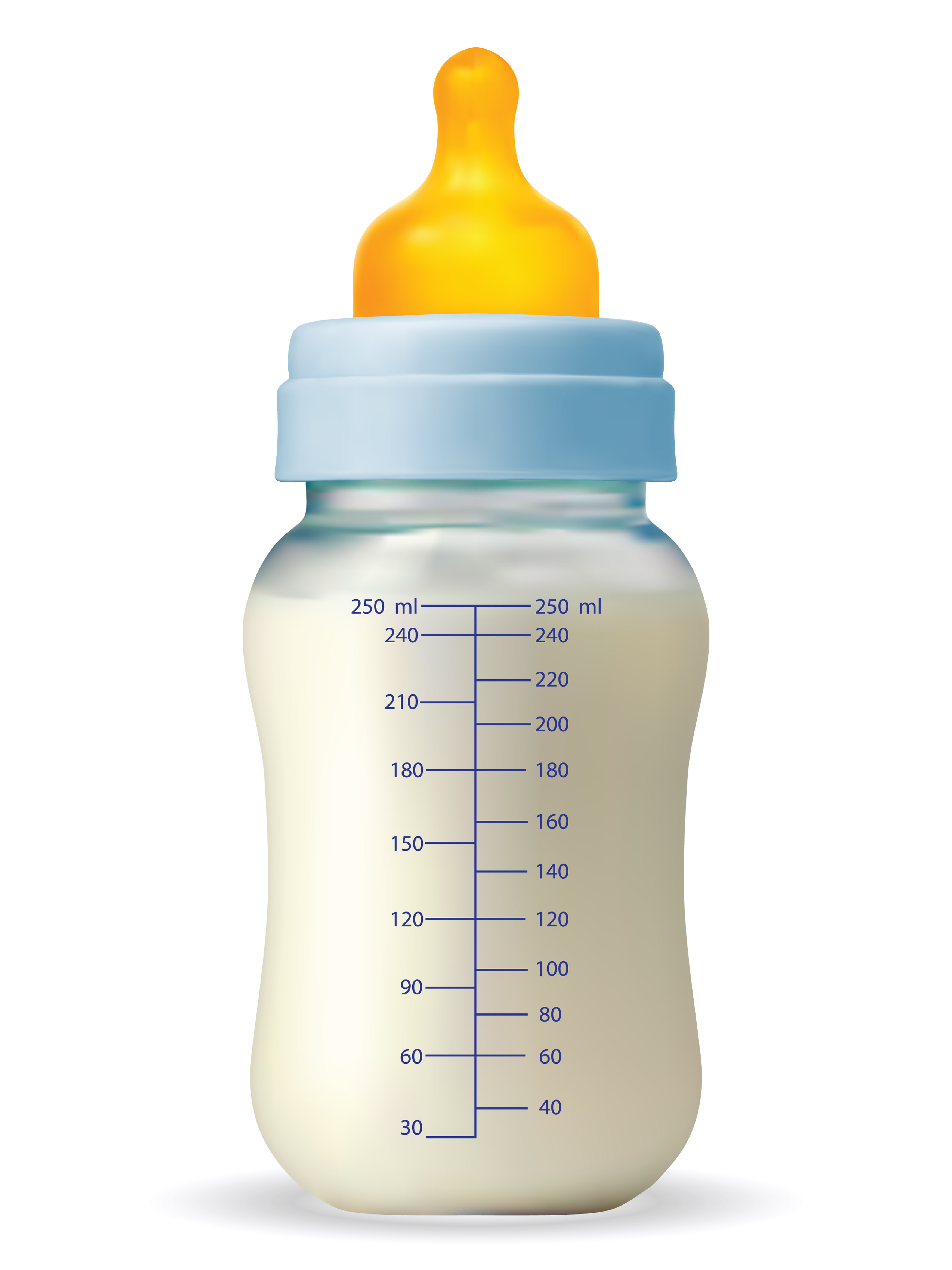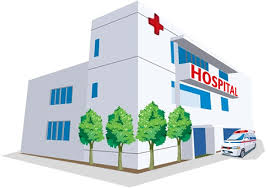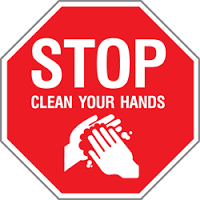Information
-
Document No.
-
Audit Title
-
Client / Site
-
Conducted on
-
Prepared by
-
Location
-
Personnel
-
Auditor(s):
-
Date and Time of Audit:
-
Location:
-
Staff Member Names:
Miscellaneous Findings:
-
Findings:
Corridors:
-
Check that all electric panels and medical gas panels are free from obstructions.<br>Electrical panels - A total of 3 ft distance is required to be cleared in all directions<br>Standards:<br>EC.02.05.09<br>
-
Check that all electrical closets are locked.<br><br>Standards:<br>EC.02.01.01, EC.02.03.01<br>
-
Check that all fire equipment including extinguishers, pull stations and fire hoses are free from obstruction, labeled and within date.<br>Standards:<br>EC.02.03.05<br>
-
Check that all fire doors are not propped open, and no visible wedge or door prop is evident.<br>Standards:<br>EC.01.01.01<br>
-
Check that all egress routes are clear (corridors are free from clutter, no trash or furniture in stairwell or elevator area).<br>Standards:<br>EC.01.01.01<br>
-
Check that any carts or other wheeled equipment in corridor is in use.<br><br>"In use" means you have seen someone using the equipment within the last 15<br>-30 minutes. Location of carts and/or wheeled equipment should be on one side of the hall.<br>If unit has permanent carts (e.g., isolation, supplies) they can only be in the hallway if there is a patient in the room. Housekeeping carts, linen carts, and computers on wheels can only sit in the hallway when they are in immediate use. Otherwise, they must have a permanent storage area on the unit, not in the corridor.<br>Standards:<br>EC.01.01.01<br>
-
Check that the area is clean and there is no visible dust, including vents and sprinkler heads.<br>Standards:<br>EC.02.06.01<br>
-
Ensure that all ceiling tiles are closed, intact (not cracked or torn), and unstained.<br>Standards:<br>EC.02.06.01<br>
-
Escutcheons are in place around sprinklers.<br><br>Standards: <br>EC.02.06.01, EP 2; LS.02.01.30<br>
-
Ensure that isolation signage is used properly when appropriate.<br>Standards:<br>IC.02.01.01, EP 3<br>
-
Drywall is intact or areas of drywall damage are clean and a work order has been placed for repair.<br>Standards:<br>EC.02.06.01, EP 1<br>
-
Emergency pull cords in inpatient bathrooms or patient bathrooms in ambulatory spaces are no more than 6 inches from the floor without touching the floor.<br><br>Does not apply to public space bathrooms <br><br>Standards: <br>EC.02.08.01, EP 1<br>
-
Emergency pull cords are functional<br><br>Standards: <br>EC.02.06.01, EP 1<br>
-
Emergency pull cords are not wrapped around the railing/bars. <br>Standards: <br>EC.02.06.01, EP 1<br>
-
Ensure that all furnishings are in good repair. Check that there are no rips in the upholstery, and that tape is not used to repair any damage.<br>Standards:<br>EC.02.06.01<br>
-
Ensure that all patient information is stored properly<br><br>Charts/wallaroos not being used are in a secured area closed and away, computers, or patient equipment displaying PHI are logged off.<br>Standards:<br>IM.02.01.01<br>
-
Blanket warmers are set not to exceed 130 degrees F (54.4 degrees C). No IV fluids are being warmed in blanket warmers.<br>Sign is present indicating that the warmer is a blanket warmer (comment if not). Blanket warmers do not require temperature logs.<br>Standards:<br>EC.02.04.01<br>
-
Fluid warmers have proper signage and are set not to exceed 104 degrees F (40 degrees C).<br><br>Standards:<br>EC.02.04.01<br>
-
Fluid warmer temperature logs are up to date with temperature documented daily.<br><br>Standards: <br>EC.02.04.01<br>
-
For fluid warmers, all IV fluids are dated and timed not to exceed 14 days in a warmer.<br><br>Standards:<br>EC.02.04.01<br>
-
EVC carts are not left unattended for extended period.<br><br>Standards: <br>EC.02.02.01, EP 5<br>
-
Point of care testing strips and control solutions are labeled with expiration date.<br><br>Standards: <br>WT.01.01.01, EP 7<br>
-
Glucometers are free of blood.<br><br>Standards: <br>WT.02.01.01, EP 7; IC.02.02.01, EP 1<br>
-
Gauze pads in glucometer are protected from contamination.<br><br>Standards: <br>IC.02.01.01, EP 1<br>
Linen Cart:
-
Ensure that clean linens are covered.<br><br>If stored by themselves in a closet with closed door, no linen cover is required. <br><br>Standards: <br>IC.02.01.01, EP 1<br>
-
Ensure that linen cart has a solid bottom shelf.<br><br>Standards: <br>IC.02.01.01, EP 1<br>
Crash Cart:
-
Check emergency equipment logs, including crash cart log. Ensure that entries are made at minimum daily (or for outpatient areas, when operational).<br><br>Only current month's log should be kept on cart. 12 month’s supply should be available to surveyors upon request.<br>Standards:<br>EC.02.04.01; MM.03.01.03 <br>
-
Ensure that crash cart and emergency equipment is locked with all lock numbers documented on emergency cart checklist.<br><br>Standards:<br>EC.02.04.03, EP 2<br>
-
Ensure that defibrillator pads are within date.
-
Carbon monoxide indicator is not expired in Ambu bag <br><br>Standards: <br>EC.02.04.03, EP 2<br>
Power Cords:
-
Ensure that all power strips and cords are organized and mounted on the wall or side of the desk at least 12 inches above the floor.
-
Medical equipment is plugged directly into wall outlet or plugged into a power strip that is permanently attached to the equipment assembly (e.g., cart)<br>No daisy chain of power strips allowed. Power strips may not be used to power non-patient care-related electrical equipment (e.g., personal electronics). <br>
CLEAN AND DIRTY UTILITY ROOMS (Specify in comments problem area):
-
Sprinklers are unobstructed allowing 18" of clearance below the sprinkler head.<br><br>Please specify whether clean or dirty utility room. <br>Perimeter wall and slack shelving may extend up to the ceiling when not located directly below a sprinkler head. (For full text and any exceptions, refer to NFPA 13-1999; 5-8.5.2.1)<br>Standards:<br>LS.02.01.35 <br>
-
Ensure that bottom shelf on any storage cart has a solid bottom.<br><br>Please specify whether clean or dirty utility room. Items stored in solid plastic bin are acceptable as well.<br>Standards:<br>IC.02.01.01; IC.02.02.01 <br>
-
Ensure that the area under the sink is clear from any items including patient care items (cleaning solutions are acceptable).<br>Standards:<br>IC.02.02.01 <br>
-
Ensure that all patient care supplies are placed on shelving or palette, not directly on the floor.<br>Standards:<br>IC.02.02.01 <br>
-
Check that oxygen tanks are stored in an approved holder with no more than 12 "E" cylinders in a room or 1 "H" and 2 "E" cylinders in a room. Empty tanks are stored separately from full tanks.<br>Standards:<br>MM.03.01.01 <br>
-
Oxygen storage areas are labeled with precautionary signs indicating oxidizing gas storage.<br><br>Per HSE018 policy, place Facilities work order if signage is needed.<br>Standards:<br>MM.03.01.01 <br>
-
All oxygen tanks outside of the normal storage area are secured correctly (tanks should never be stored flat and they should be in a designated holder).<br>Standards:<br>MM.03.01.01 <br>
-
Appropriate storage of oxygen tanks; never used tanks (as indicated by green cap over oxygen nozzle) are stored separately from partially used and empty tanks<br><br>Standards: <br>EC.02.03.01, EP 1 <br>
-
Full unused and partially used signs are posted on the appropriate oxygen racks.<br><br>Standards: <br>EC.02.03.01, EP 1 <br>
-
Any cleaning solution transferred to a secondary container must be labeled with the name of the cleaning solution.<br>Standards: <br>EC.02.02.01<br>
-
Check that specimen refrigerators are clean and in working condition.<br><br>Standards:<br>WT.01.01.01<br>
-
Check for dates and labels on all specimens.<br><br>Score as "No" if there are any specimens older than 72 hours. Per Barbara Parsons, it is ideal if specimens are not stored on the unit more than 24 hours.<br>Standards:<br>WT.01.01.01<br>
-
If refrigerator is not honeywelled, check for temperature logs (action documented if out of range).<br><br><br>Answer N/A if system is monitored by Honeywell sensor.<br>Standards:<br>WT.01.01.01<br>
-
Look for medical equipment maintenance or inspection tags that are current.<br>Standards:<br>EC.02.04.01; EC.02.04.03 <br>
-
Ensure that all medical equipment is free of tape and/or tape residue. <br><br>Standards: <br>IC.02.02.01, EP 1<br>
-
Ensure no clean supplies are stored in Dirty Utility room. Ensure only clean items in the Clean Utility room.<br><br>Standards:<br>IC.02.02.01, EP 4<br>
-
Ensure that eye wash stations are operational and logs are completed weekly for each eyewash station.<br><br><br>Eye wash should have a covered cap and should have a sign which identifies the area as an eye wash station.<br>Standards:<br>EC.02.01.01<br>
-
Ensure that biohazard bags are not used to store clean supplies.
-
Ensure no cardboard shipping boxes are stored in Clean Utility (all items should be unpacked).
-
Appropriate storage of dirty instruments in dirty utility room awaiting processing.<br><br>Pre-cleaned or rinsed, stored in open position, if applicable, and kept moist while awaiting transport. <br>
-
Biohazard signage is used for bio-hazardous material.
-
Biohazard sticker is present on specimen refrigerator.
-
Stored scopes are reprocessed a minimum of every 14 days.
-
Solutions and test strips used during HLD/sterile processes are within expiration date.
NUTRITION ROOM/KITCHEN:
-
For refrigerator/freezers not honeywelled, temperature logs are checked daily. Action documented if out of range.<br><br>Answer N/A if system is on a Honeywell sensor.<br><br>Standards: <br>PC.02.02.03, EP 11 <br>
-
Check labels and dates for all juices and food products stored in the patient refrigerator.<br><br><br>Juices expire 72 hours after opening. Patient food expires in 24 hours. <br>All open juice containers must be labeled with the expiration date. If food is brought from home it must be wrapped and labeled with the expiration date and the patient's name, history number, and room number.<br>Standards:<br>PC.02.02.03, EP 11<br>
-
Check that refrigerator is clean (including gaskets) and in working order. Ensure that no staff food is in the patient refrigerator. <br><br>Standards:<br>PC.02.02.03, EP 11<br>
-
Ensure that the area under the sink is clear from any items including patient items.<br>Standards:<br>IC.02.01.01; IC.02.02.01<br>
-
Room is kept clean. Appliances, floor, shelving appear clean.<br><br>Standards:<br>EC.02.06.01<br>
MEDICATION ROOM:
-
Randomly select 5 different supplies/medications and check for expiration date.<br><br>Standards:<br>IC.02.02.01, EP 4<br>
-
In ED, OR, ICU, PACU, Cath labs, IR, Endoscopy and any other Procedural/radiology areas: Check for proper labeling of syringes/containers containing medications and/or normal saline. (e.g. on medication and anesthesia carts).<br><br>Standards:<br>NPSG.03.04.01<br>
-
Check that all multi-dose vials are stored properly. Open vials expire 28 days after opening.<br><br>If used in any direct patient care area (i.e., OR room, procedure rooms, clinic room), a multi-dose vial must be treated as a single-dose vial and discarded after each case.<br>Standards:<br>MM.03.01.01; NPSG.03.04.01<br>
-
On floor units: Ensure that all syringes are locked/secured unless storage area is monitored by licensed personnel.<br>Standards:<br>EC.02.01.01<br>
-
On adult inpatient nursing units, aspart insulin ONLY is stored in the medication refrigerator, and is properly labeled and not expired. Aspart and other types of insulin are permitted on outpatient areas and pediatric units.<br><br>Open vials are good for 28 days. <br><br>Standards:<br>MM.03.01.01, EP 3<br>
-
Ensure that the medication room and medications are secured. Ensure that both anesthesia and medication carts auto lock.<br><br><br>Auto lock activates in 60 seconds. <br>Standards:<br>MM.03.01.01, EP 3<br>
-
Ensure that the area under the sink is clear from any items including patient items.<br>Standards: <br>IC.02.01.01; IC.02.02.01<br>
-
Ensure that the medication refrigerator is clean (including gasket), working condition, temperatures are checked regularly, if not Honeywelled (action documented if out of range), and that all medications are stored and labeled properly (with dates, patient names if appropriate, med names).<br><br>If vaccines are stored and there is no Honeywell, temperature logs must be done twice a day.<br>Standards:<br>IC.02.01.01; IC.02.02.01<br>
PATIENT CARE AREAS (TREATMENT ROOMS, INPATIENT ROOMS, CLINIC ROOMS):
-
Emergency pull cords in patient rooms or treatment room are no more than 6 inches from the floor without touching the floor.
-
Emergency pull cords are not wrapped around the railing/bars
-
Emergency pull cords are functional.<br><br>Psych exception: Only break away pull cords or nurse call buttons are present in psych patient care areas.<br>Immediately report finding any cords that are not break away cords to psych leadership.<br>
-
Medical equipment is plugged directly into wall outlet or plugged into a power strip that is permanently attached to the equipment assembly (e.g., a cart). Power strips are not plugged into other power strips.
-
The patient room or treatment room is clean and free of visible dust, dirt and stains.
-
Drywall is intact or areas of drywall damage are clean and a work order has been placed for repair
-
Ensure all furnishings are in good repair. Check that there are no rips in the upholstery and that tape is not used to repair any damage.
-
Equipment is free of tape residue.
-
Bedside supply carts/anesthesia carts are locked where required.
-
If medications are stored in patient room, no medications are left after patient is discharged.
-
All red bag trash cans have a lid and a red bag.
MISCELLANEOUS:
-
If lead aprons are present, staff can speak to the inspection process.<br><br>Lead is inspected via fluoroscopy or x-ray at a minimum of once per year.<br>
-
Lead apparel items are uniquely labeled for inventory tracking purposes.<br><br>Examine a sample of lead on hand for presence of unique label, such as AR code.<br>
-
Lead aprons appropriately inspected annually<br><br>Tracking number can be sent to Pattie Jones/Aileen Almario to check for inventory dates<br>
-
If the floor or unit has negative pressure room(s), staff are able to verbalize how they know that the room is operational. (Can staff interpret the type of pressure monitoring device in place)
-
Patient equipment alarm response time appropriate.
-
Solutions (e.g., alcohol, betadine and peroxide) are not expired.<br><br>Use manufacturer date on bottle. If for patient use-SINGLE USE ONLY.<br>
STAFF INTERVIEWS/OBSERVATIONS:
-
Interview one staff member and ask them if they know how to access Safety Data Sheets (SDS) on the HSE website. http://www.hopkinsmedicine.org/hse/index/html - link accessible on TJC website as well<br><br>Standards:<br>EC.01.01.01<br>
-
Interview one staff member and ask if they can locate Emergency and Disaster references.<br><br>Emergency Response Reference : https://hpo.johnshopkins.edu/hopkins/policies/52/1606<br>/emergency_response_at_jhh_hse028_revision1_nov_2015.pdf<br><br>HPO: Emergency Preparedness: https://hpo.johnshopkins.edu/hopkins/?event=manual&manualid=52<br>Standards:<br>EM.01.01.01; EM.02.01.01<br>
-
Observe 3 hand washing opportunities and ensure for appropriate technique (consider asking staff what procedure is for c. diff patients).<br><br>Staff need to be able to describe need to use soap and water when caring for patients with c. diff.<br>Standards:<br>NPSG.07.01.01<br>
-
Interview one staff member and ask them to define contact time for disinfectant wipes.<br><br>Contact time is 2 minutes. For C-diff, contact time is 5 minutes with Oxivir. <br>
-
Interview one staff member and ask how frequent BP cuffs, exam rooms, and medical equipment should be disinfected (minimum of once daily and when visibly soiled).<br>(Ambulatory)<br>Per IFUs<br>
-
Staff are able to identify the location of emergency pull stations within their unit or area.
-
Staff are able to verbalize their responsibilities in the event of fire or emergency.
-
Staff can speak to PI/QI projects on their unit.
PSYCHIATRIC AREAS ONLY:
-
Portable fire extinguishers are in metal or recessed cabinets that staff can only open with a key, staff can identify where key to fire extinguisher is located.
-
Housekeeping carts with chemicals are under direct supervision of staff or are locked away from clients.
-
Patient access to alcohol based hand gel is restricted to corridors outside patient rooms.
-
Tape is used to attach items to bulletin boards (not tacks, stick pins or staples).









